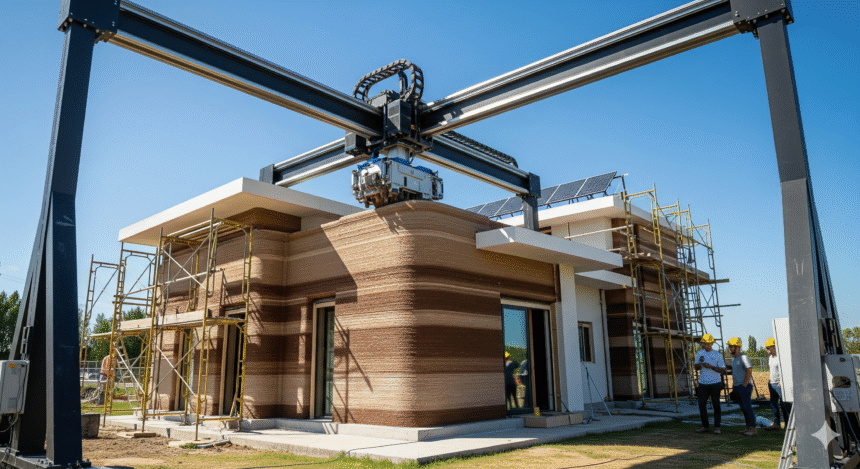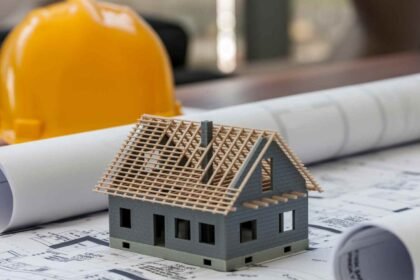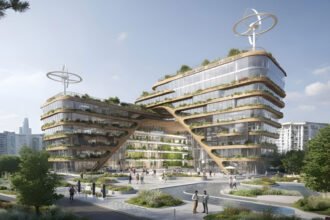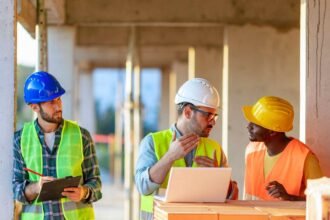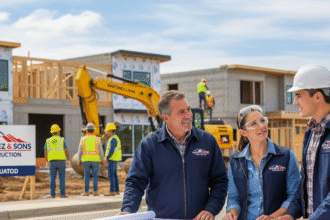The idea of printing a house might have sounded like science fiction just a decade ago. Today, 3D printed homes are moving from experimental prototypes to real neighbourhoods. They promise something the world urgently needs: affordable housing solutions that are also sustainable, fast to build, and resilient in tough climates.
What Makes 3D Printed Homes Different
Instead of traditional bricklaying or wood framing, 3D printing construction relies on large robotic printers that extrude layers of concrete or eco-friendly mixtures straight from a digital design. This method eliminates the need for formwork and reduces labour significantly.
Some projects have shown that a small 3D printed concrete home can have its foundation and walls completed in less than 24 hours.
The cost is equally striking, while a traditional American house may cost $200,000 or more, printed homes can range from $10,000 to $50,000, depending on size and materials. This huge gap makes affordable 3D printed homes a serious contender in addressing housing shortages worldwide.
Building Green with 3D Printing
Housing is not only expensive but also environmentally heavy. The construction sector contributes nearly 40 per cent of global emissions and generates substantial amounts of waste. 3D printed housing offers a much cleaner path.
Because the printers use exactly the amount of material required, waste is nearly eliminated. Many companies are experimenting with low-carbon concrete homes and even bio-based construction materials such as wood fibres, rice husks, or bioplastics. Some projects, like the BioHome in Maine, are testing recyclable 3D printed houses that can be fully disassembled and reused. These innovations show how eco-friendly 3D printed homes could reshape sustainable construction.
Affordable Housing in Action
The promise of 3D Printing is not just in labs; it’s visible in real communities.
In Houston, Texas, a development called Zuri Gardens is printing the first stories of 80 houses using low-carbon concrete. These 3D printed houses in Texas target middle-income families and are priced in the $200,000 range, lower than many new builds in the area.
In Austin, the company ICON is selling affordable 3D printed homes in the Mueller neighbourhood. The 650-square-foot one-bedroom units are listed at $195,000 and use 30 per cent less material than a typical build. Construction of each takes just two to four weeks.
Another milestone project is Wolf Ranch in Georgetown, Texas, where 100 3D printed ranch houses are being built with a material called Lavacrete. These single-level homes are not only quick to produce, taking 4–6 weeks, but also resistant to hurricanes, wildfires, and extreme heat.
Beyond Texas, 3D-printed housing communities are appearing globally.
In Alaska, researchers are testing printed concrete homes designed to withstand freezing temperatures while staying affordable. In Australia, a company called Luyten 3D has built two-storey houses in just over 30 hours. Even Habitat for Humanity’s 3D printed house in Arizona has proved that charitable housing projects can benefit from this technology.
Affordability Matters
The global housing crisis has left millions priced out of homeownership. Rising labour costs, material shortages, and climate pressures have only made things worse. Cheap 3D printed homes present a new alternative. By cutting labour by as much as 80 per cent and speeding up timelines, developers can build more houses in less time.
This is not just a solution for the poor. 3D Printing in real estate is beginning to attract middle-class buyers, developers, and governments. As regulations catch up, more cities may allow 3D printed housing projects as part of their affordable housing plans.
The Challenges Still Ahead
Despite the excitement, there are hurdles. Building codes for 3D printed homes are still evolving, and many local authorities are cautious about approving large projects. The upfront investment in printers and training can also be expensive.
Material choice is another issue. While 3D concrete Printing is strong and versatile, cement itself is carbon-intensive. Expanding into greener alternatives like bio-based mixtures will be key to making green building technology through 3D Printing truly sustainable.
Lastly, public perception matters. Some people see printed homes as futuristic but unattractive. Overcoming this stigma will require designs that are not only affordable and efficient but also visually appealing.
The future of affordable and sustainable housing may well be shaped by the nozzle of a 3D printer. As communities from Texas to Alaska, Australia, and beyond continue experimenting, one truth is clear: this technology can change the way we think about homes.
With scaling 3D printed housing, costs will drop further, and new materials will make homes even more eco-friendly. If governments adapt regulations and support innovation, the dream of sustainable 3D printed homes for everyone may soon become reality.
The journey has just begun, but it’s no longer just a concept. Around the world, people are already living in printed homes, and for them, the future of housing has arrived.


